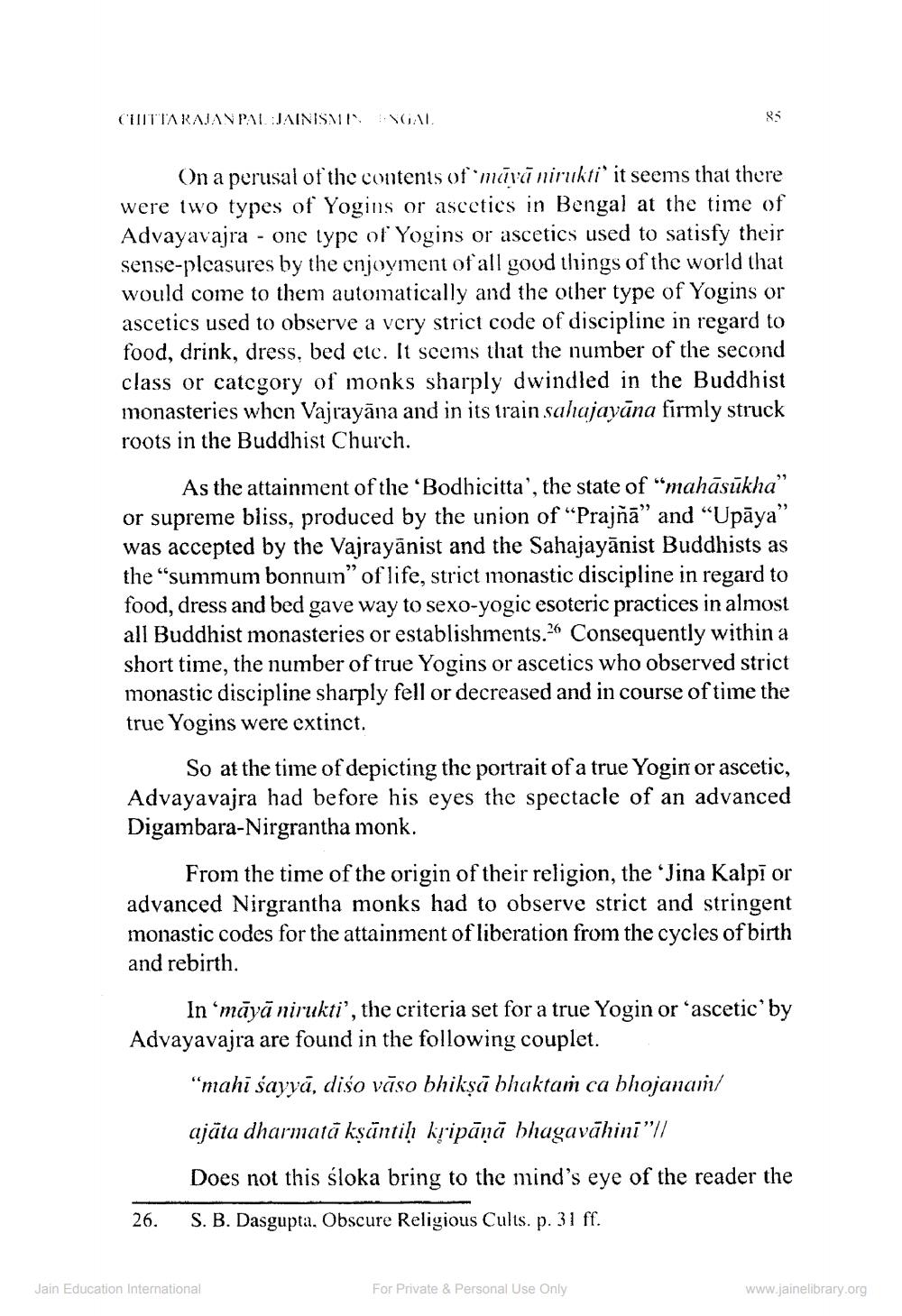________________
CUTIARAJAPAL:JAINISM
IGAL
On a perusal of the contents of marinirukti' it seems that there were two types of Yogins or ascetics in Bengal at the time of Advayavajra - one type of Yogins or ascetics used to satisfy their sense-pleasures by the enjoyment of all good things of the world that would come to them automatically and the other type of Yogins or ascetics used to observe a very strict code of discipline in regard to food, drink, dress, bed etc. It seems that the number of the second class or category of monks sharply dwindled in the Buddhist monasteries when Vajrayāna and in its train sahajayāna firmly struck roots in the Buddhist Church.
As the attainment of the 'Bodhicitta', the state of “mahāsūkha" or supreme bliss, produced by the union of “Prajñā” and “Upāya" was accepted by the Vajrayānist and the Sahajayānist Buddhists as the "summum bonnum” of life, strict monastic discipline in regard to food, dress and bed gave way to sexo-yogic esoteric practices in almost all Buddhist monasteries or establishments.26 Consequently within a short time, the number of true Yogins or ascetics who observed strict monastic discipline sharply fell or decreased and in course of time the true Yogins were extinct.
So at the time of depicting the portrait of a true Yogin or ascetic, Advayavajra had before his eyes the spectacle of an advanced Digambara-Nirgrantha monk.
From the time of the origin of their religion, the 'Jina Kalpī or advanced Nirgrantha monks had to observe strict and stringent monastic codes for the attainment of liberation from the cycles of birth and rebirth.
In ‘māyā nirukti', the criteria set for a true Yogin or 'ascetic' by Advayavajra are found in the following couplet.
"mahi sayvā, diso vaso bhikṣā bhaktam ca bhojanam/ ajāta dharmatā kşüntil kļipānā bhagavähini"//
Does not this sloka bring to the mind's eye of the reader the 26. S. B. Dasgupta. Obscure Religious Cults. p. 31 ff.
Jain Education International
For Private & Personal Use Only
www.jainelibrary.org




